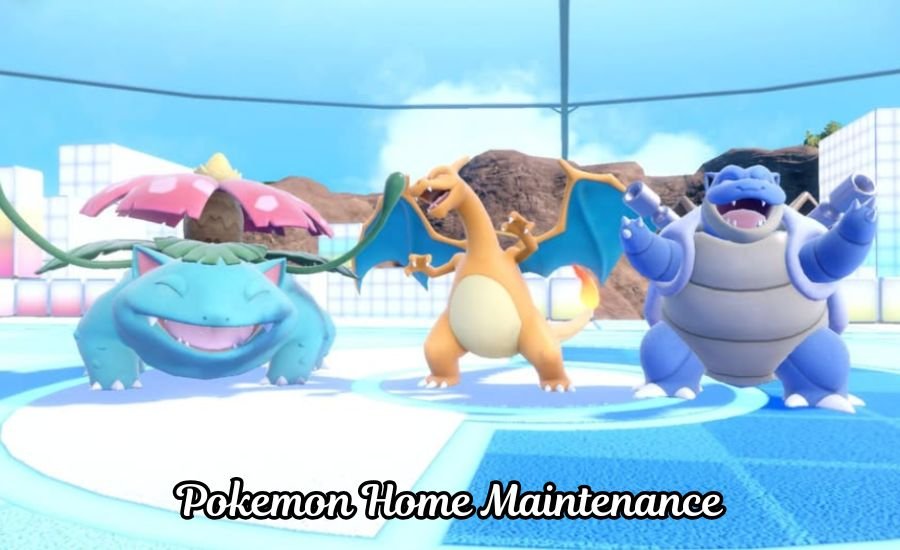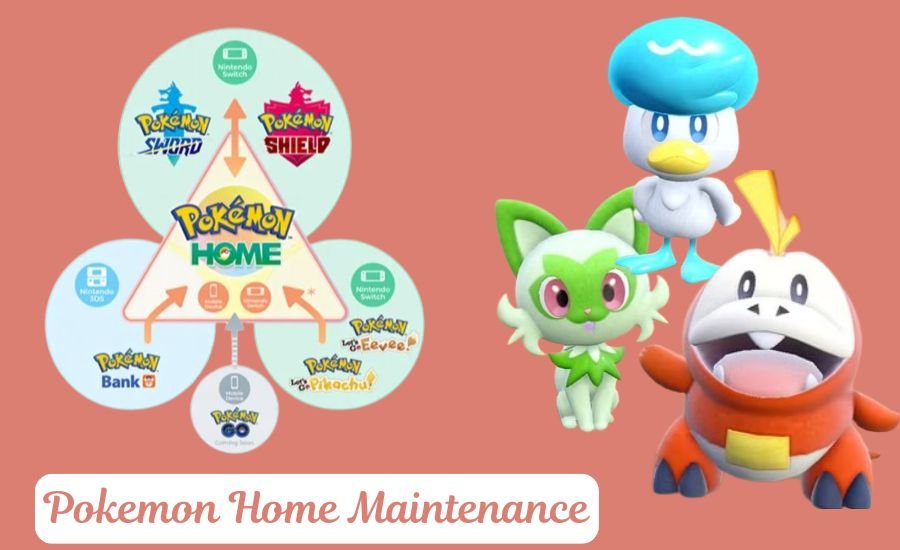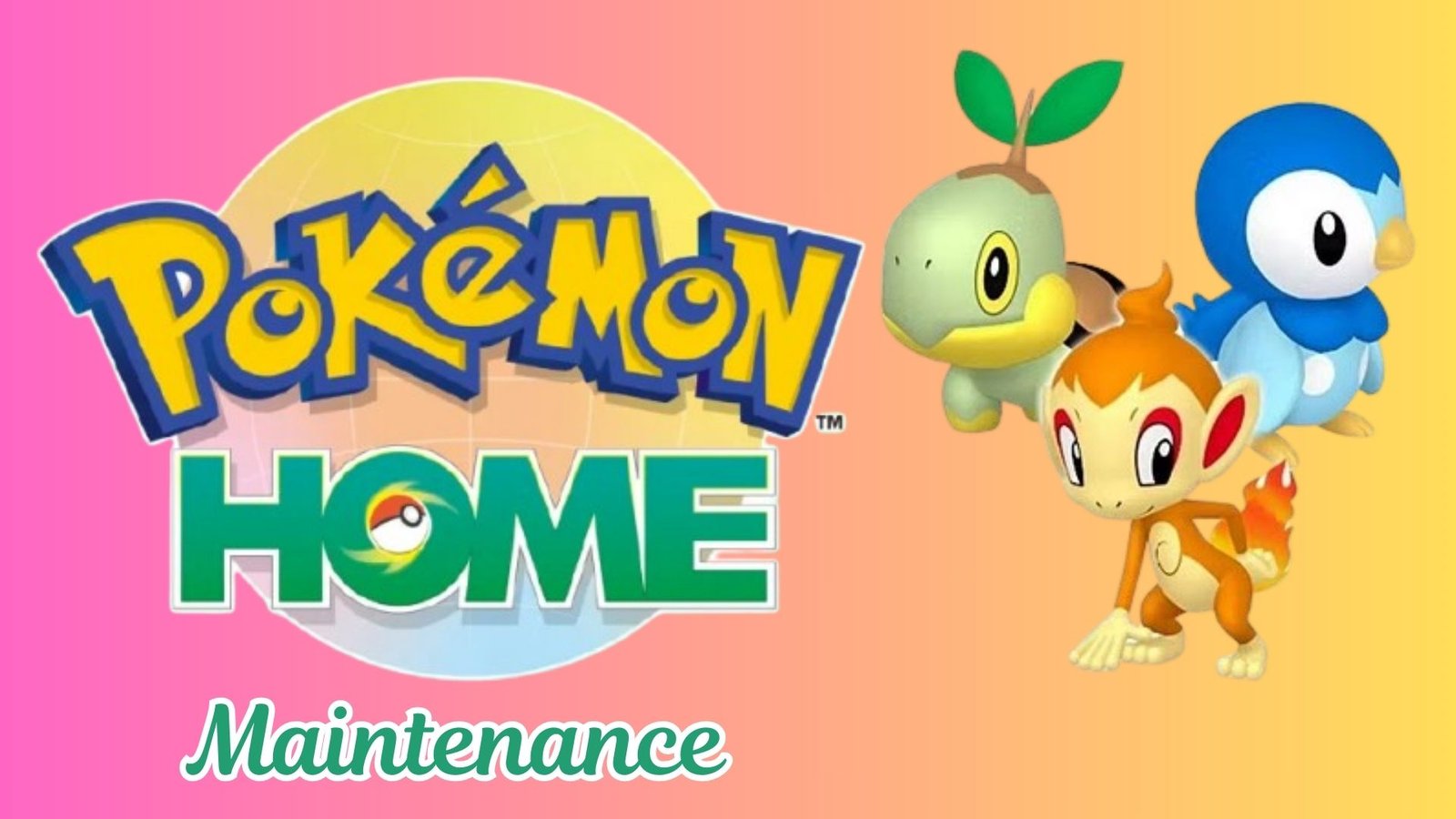Pokemon Home Maintenance has transformed how trainers handle their collection across different games. The cloud-based system requires regular maintenance for seamless operation and secure data. Whether you’re an amateur or an avid battler, knowing “Pokemon Home Maintenance” is vital to protecting your prized Pokemon and maximizing storage efficiency. This guide will help you understand the best practices, troubleshooting strategies, and strategies to keep your account safe, well-organized, and aligned with Google’s current SEO and guidelines for content.
Understanding Pokémon Home’s Ecosystem
Pokemon Home Maintenance is an essential hub for moving, trading, and keeping Pokemon from various titles, including Pokemon Scarlet/Violet, Legends: Arceus, and Pokemon GO. The free and premium levels offer different storage capacities than those premium and can support as many as 6000 Pokemon. Regular maintenance ensures your collection remains accessible and avoids issues like data corruption or syncing errors. Familiarize yourself with features like Wonder Box trades, Global Trading System (GTS), and Room Trades to optimize your experience.
Why Regular Pokémon Home Maintenance Matters

Neglecting Pokemon Home Maintenance can lead to cluttered boxes, expired trades, or even accidental releases of rare Pokémon. Routine checks help identify outdated entries, duplicate species, or Pokémon stuck in limbo during transfers. Additionally, staying proactive reduces the risk of server-related glitches, especially during significant game updates or events. A well-maintained account also streamlines competitive team-building and Shiny hunting efforts.
Step-by-Step Routine Maintenance Checklist
1. Audit Your Pokémon Storage
Begin by opening Pokemon Home Maintenance and navigating to the “Pokémon” tab. Use the Sort feature (found in the top-right menu) to organize your collection by species, level, or game origin. This reveals duplicates (e.g., multiple Pikachu from Pokémon GO) or low-value entries (common species like Bidoof). For precision, apply Filters like “Shiny,” “Legendary,” or “Regional Forms” to isolate priority Pokémon. Release or trade redundant entries via Wonder Box to free space. Pro Tip: Label boxes as “Keepers” or “Trade” to streamline future audits.
2. Clear Expired Trades
Access the Trade section and select “GTS” or “Wonder Box.” Review active submissions—trades expire after 24–48 hours if unmet. Remove stagnant requests (e.g., a level 1-10 Dialga) by selecting “Cancel.” This frees slots for new trades. For Wonder Box, replace unclaimed Pokémon with high-demand species (e.g., starters) to accelerate turnover. Note: Check daily during events to maximize trade efficiency.
3. Update Game Compatibility
On Nintendo Switch, ensure linked games (Scarlet/Violet, Legends: Arceus) are updated:
- From the Home menu, highlight the game, press “+” > “Software Update” > “Via the Internet.”
- Confirm version matches Pokémon Home’s requirements (e.g., Scarlet/Violet v2.0.1+).
Outdated games block transfers or corrupt data. Enable Auto-Update in System Settings to avoid manual checks.
4. Backup Critical Data
While Pokemon Home Maintenance saves data separately, use Nintendo Switch Online cloud backups for linked games:
- In System Settings, select “Data Management” > “Save Data Cloud” > enable backups.
- Transfer irreplaceable Pokémon (e.g., event Mythicals) to physical games like Sword/Shield as a failsafe.
Reminder: Document OT names, IVs, and dates for rare Pokémon to simplify recovery if lost.
Optimizing Storage with Labels and Filters

Pokémon Home’s labelling system allows trainers to categorize Pokémon by type, battle readiness, or Shiny status. Utilize filters like “Regional Dex” or “Legendary/Mythical” to quickly locate specific entries. For competitive players, marking IVs, EVs, and natures simplifies team-building. Premium users can create custom boxes for event Pokémon, breeding rejects, or trade fodder.
Security Measures for Pokémon Home Accounts
Secure your account from unauthorized access by activating 2-factor authentication (2FA). Nintendo account. Beware of sharing login information, and be wary of frauds that promise uncommon Pokemon. Regularly review linked devices and revoke access for unfamiliar platforms. For added safety, avoid storing irreplaceable Pokémon like event-exclusive Mythicals in the cloud without local backups.
Handling Pokémon Home Updates and Patches
Game Freak frequently updates Pokemon Home Maintenance to support new titles or fix bugs. Before updating, ensure your device (Switch, mobile, etc.) has sufficient storage and a stable internet connection. Post-update, verify that transferred Pokémon retain correct attributes, such as moves or abilities, which may change between game generations.
Troubleshooting Common Pokémon Home Issues

- Sync Errors: Restart the app, check server status, or re-link your Nintendo account.
- Missing Pokémon: Confirm transfers weren’t interrupted and check all boxes, including “Basic” and premium tiers.
- Compatibility Problems: Some Pokémon from older games may require adjustments (e.g., removing HM moves) before transferring.
Backup Strategies to Prevent Data Loss
While Pokémon Home lacks a traditional backup system, you can safeguard your collection by:
- Keeping critical Pokémon in physical games rather than the cloud.
- Recording stats and OT details for rare species.
- Using multiple profiles to distribute high-value Pokémon.
Advanced Maintenance: Preparing for New Game Releases
Anticipate updates for upcoming titles like Pokémon Legends: Z-A by clearing space and organizing boxes in advance. Research compatibility changes, such as altered move pools or excluded species, to avoid transfer roadblocks.
Seasonal Maintenance and Event Prep

Seasonal events, limited-time distributions, and game updates demand meticulous preparation to maximize Pokemon Home Maintenance. Proactive maintenance ensures you capitalize on exclusive content while avoiding storage chaos, whether it’s a Pokémon GO Community Day, a Mythical giveaway, or a significant title launch like Legends: Z-A. Here’s how to optimize your strategy:
Pre-Event Preparation
Before an event begins, declutter your storage to create space. Sort boxes to remove duplicates, low-IV Pokémon, or common species likely to flood your collection (e.g., Shiny Mareep during a Community Day). Label temporary boxes as “Event Storage” or “Trade Fodder” for quick access. Sync linked games (Scarlet/Violet, Pokémon GO) to prevent transfer errors and update all software. For example, before Pokémon GO Fest, clear 100–200 slots to handle sudden surges of rare catches.
During the Event
Prioritize transferring event-exclusive Pokémon (e.g., Ash’s Hat Pikachu, Dada Zarude) to Home immediately to prevent accidental deletions in mobile games. Use labels like “2024 Event” or “Shiny Legendaries” for the organization. Monitor the Global Trading System (GTS) for rare deals—events often spike demand for species like Enamorus or regional forms. Refresh Wonder Box trades hourly to cycle through offers. Pro tip: Use Pokémon GO’s “Quick Transfer” feature to send batches to Home without manual selection.
Post-Event Cleanup
After the event, audit your haul. Keep high-value Pokémon (perfect-IV Legendaries, rare Shinies) and release common duplicates. Transfer irreplaceable species to main games (Scarlet/Violet) for safekeeping, as Home lacks a traditional backup system. Update your Living Dex with new forms (e.g., Bloodmoon Ursaluna) and purge expired GTS trades. For instance, store only 1–2 copies in Home after a Mythical distribution and trade extras for missing entries.
Avoiding Pitfalls
Avoid overloading storage during holidays or updates—stick to a 6,000-Pokémon limit. Set reminders for time-limited distributions (e.g., serial codes for Genesect) to avoid missing expiration dates. Watch for phishing scams offering “exclusive” event Pokémon; never share login details.
Conclusion: Mastering Pokémon Home Maintenance
By integrating Pokemon Home Maintenance practices, trainers can ensure their Pokémon Home experience remains efficient and stress-free. Stay informed about updates, prioritize security, and leverage organizational tools to keep your collection battle-ready. With proactive management, your Pokémon Home will serve as a reliable vault for generations of creatures to come.
Stay Connected with Better Home Crafts!
FAQs on Pokémon Home Maintenance
Q: Can I recover accidentally released Pokémon?
A: No—always double-check before confirming releases.
Q: How often should I perform maintenance?
A: Aim for monthly checks or before/after significant game updates.
Q: Does Pokémon Home delete inactive accounts?
A: Nintendo may purge data after prolonged inactivity, so log in periodically.
